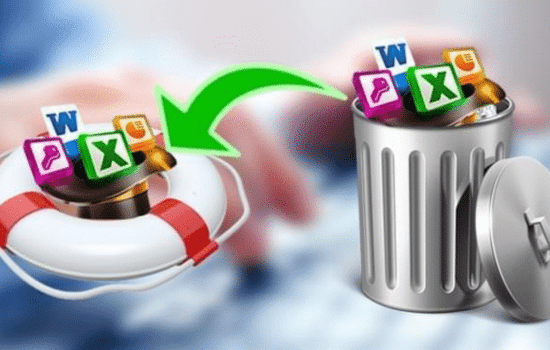In the digital age, where every moment is immortalized with a simple photo, losing important images can be a devastating experience.
Whether it's due to a device failure, accidental deletion, or even a corrupted SD card, many people face the frustration of not being able to access their most precious memories.
But the good news is that Recovering deleted photos is no longer the exclusive privilege of technology experts.Thanks to the evolution of mobile applications, It is now possible to restore lost images directly from your cell phone, without the need for technical knowledge or computers..
As a marketing professional with years of experience in mobile app positioning, I have closely followed the transformation of this niche.
And I can say with certainty: Users value fast, free and effective solutions more than ever..
In this article, I want to share with you a strategic vision of how these applications have become essential allies for thousands of people, as well as highlight three leading tools in this segment.
The real problem of losing photos
Losing photos can be more than just an annoyance. Often, those images are related to important personal events: a wedding, a birth, a dream vacation, or even legal or work-related evidence.
The anguish generated by the loss of these files has a genuine emotional impact.
In the world of marketing, we understand that feelings drive decisionsAnd the need to recover what was lost creates a strong search intent on platforms like Google, YouTube, and social media.
In Latin America alone, More than 300,000 people a month search for how to recover deleted photos.This makes the topic one of the most active and constant demands within the utility applications market.
What are users really looking for?
To successfully design and position a digital solution, it's essential to understand the consumer's mindset. What do they expect when they download a photo recovery app?
- Free of charge: The average user does not want to pay immediately.
- Immediate resultsIf you don't see your photos within the first few minutes, you'll probably want to uninstall the app.
- Simple interface: The design should be friendly to all ages, especially for audiences over 40.
- Compatibility: should work on most Android and iOS devices.
The key to success lies in combining these factors with good ASO (App Store Optimization) positioning and emotional marketing campaigns. But beyond the strategies, what really matters is that the app works and recover real photos.
The evolution of recovery apps
A few years ago, recovering a deleted image involved connecting the cell phone to a computer, using specialized software, and often paying for the premium version of the program.
Nowadays, thanks to the advancement of mobile development, internal scanning algorithms allow An app detects remnants of images even after they have been deleted from the recycle bin.
This type of technology works by analyzing the device's internal memory and external memory cards. While results may vary depending on the time elapsed since deletion, in many cases the images are still present on the system, simply hidden or marked as "free space."
With that in mind, it's time to talk about the Three best free apps to recover photos, which meet the requirements of effectiveness, popularity and good user ratings.
1. DiskDigger Photo Recovery
After testing dozens of tools, I can assure you that DiskDigger is one of the most powerful apps on the marketIts deep recovery system allows you to find JPG, PNG, and even some video files.
Main features:
- Deep and basic recovery: Ideal for both quick scans and more detailed searches.
- Preview before restoring: The user can view the recovered images before deciding to save them.
- Option to upload to the cloud: can be saved directly to Google Drive or Dropbox.
Available for Android, DiskDigger surpasses 100 million downloads and maintains an average rating of over 4.4 stars on the Google Play Store. Although it has premium features, the free version is sufficient for most uses.
2. Photo Recovery – Restore Image
This app has become a favorite for those looking for quick, hassle-free results. The most attractive feature of Photo Recovery is that It can detect deleted photos even from several months ago..
What users value most:
- No root requiredMany similar apps require advanced permissions that make them difficult to use. This app works without them.
- Clear interface: With large buttons and explanatory text, it is perfect for users of any age.
- Quick scan: In just a few minutes it already shows the first results.
Its popularity has grown significantly in recent years thanks to recommendations on social media and YouTube technology channels. It currently has over 50 million installs and a 4.6-star rating.
3. Dumpster – Recycle Bin
Unlike the previous ones, Dumpster acts as a smart recycle bin for AndroidInstead of searching for deleted files, it prevents permanent deletion by acting as a layer of security.
Why is it an excellent option?
- Immediate recovery: If you deleted something by mistake, you can restore it in seconds.
- Compatible with photos, videos, documents and more.
- No internet connection required to function.
Although its approach is more preventative than corrective, many users have recovered important files thanks to this app. It has over 50 million downloads and a solid reputation in the community.
Tips to avoid losing photos in the future
In addition to having these tools, it is essential to adopt habits that protect your memories:
- Turn on automatic backup to Google Photos or iCloud.
- Avoid using automatic cleaning apps without checking what they are going to delete..
- Always check the trash before emptying it completely..
- Save your important photos in two different places: the cloud and an external drive.
The power of emotional marketing in this niche
In my experience, ads and campaigns that appeal to users' emotions have higher conversion rates in this segment. Images of families, grandparents, trips, or special events work very well. Phrases like:
- “Recover the memories you thought were lost”
- “Your childhood photos can come back”
- “Don’t let a mistake take away what you love”
See also:
- Dancing Zumba from home is a global trend.
- Learning mechanics has never been so easy
- Alternatives to Uber in Argentina: Which apps to use depending on the city
- Apps for safe travel: route and weather alerts in Argentina
- How to find gas stations with better prices along your route
These approaches connect directly with audiences over 40 years old — who often have less familiarity with technology, greater emotional attachment to photos. It's just those emotions that drive download decisions, engagement and positive reviews.
Conclusion
Losing photos may seem like an unsolvable problem, but thanks to mobile technology, Today we have the power to retrieve memories directly from our pockets.Whether it's DiskDigger, Photo Recovery, or Dumpster, millions of people have managed to restore valuable images with just a few taps.
As a marketer, I recommend including these types of solutions in content strategies, paid ads, and even informational articles. The need is real, the audience is massive, and the emotional value is unmatched..
In the digital world, every photo tells a story. And now, we have the opportunity to relive those stories… without paying anything for it.


